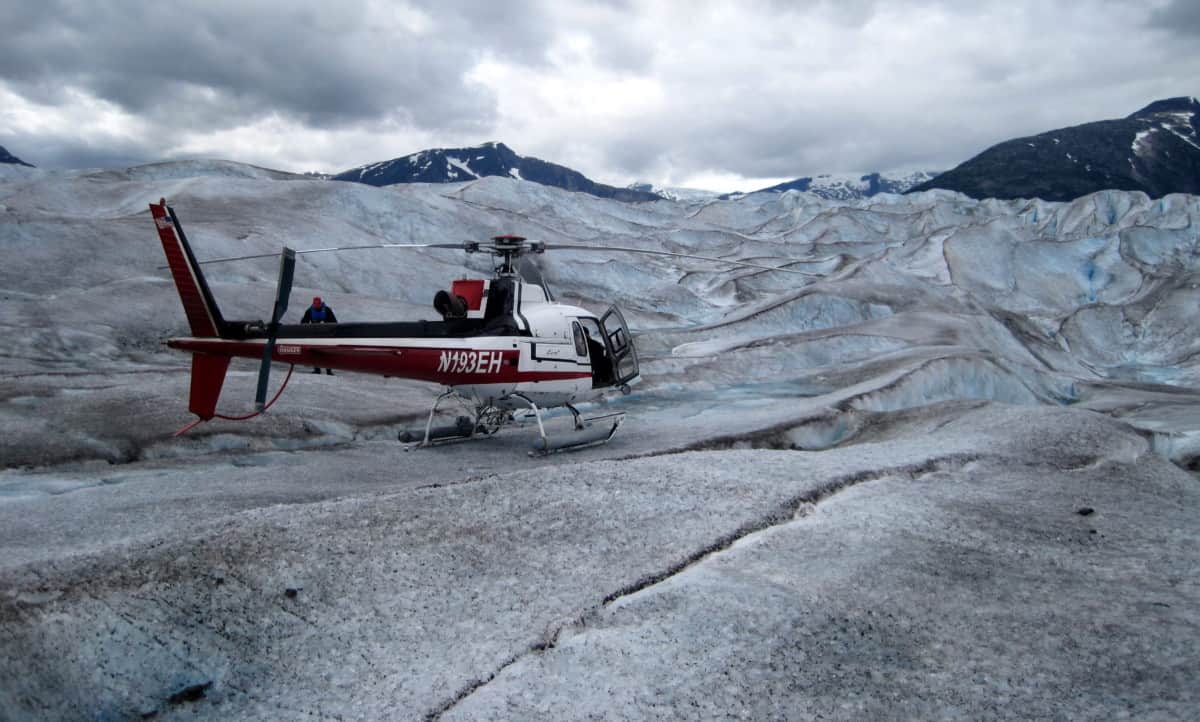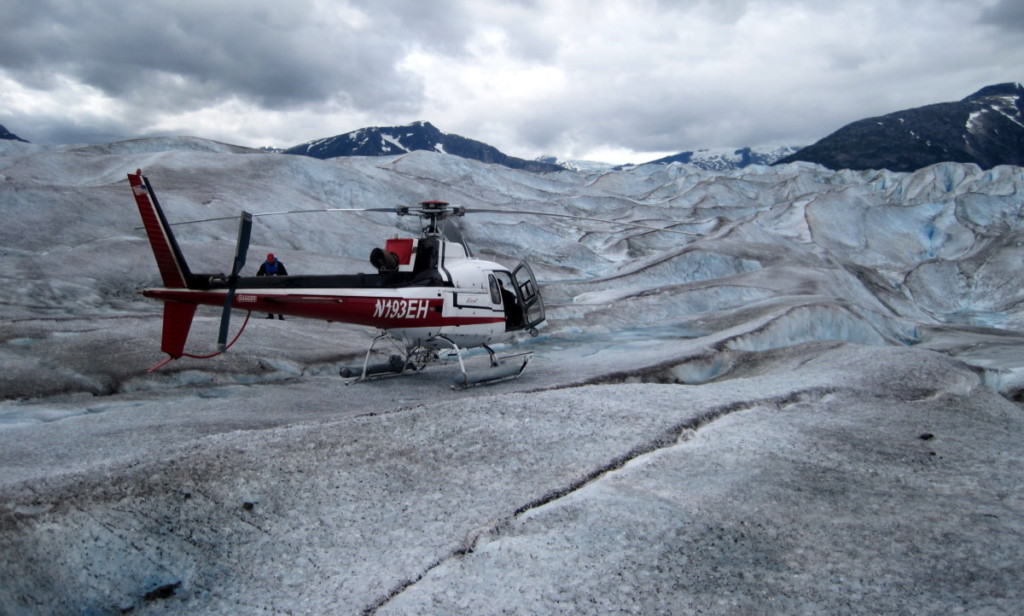
Helicopters are one of the most versatile machines in the aviation world but the distance they can go is far less than their fixed-winged counterparts, but the tradeoff to landing on a building or in a backyard when they arrive at their destination is a huge bonus.
Most helicopters are designed to fly between 200-450 miles. The average piston-engine helicopters have a range of around 200-350 miles, while the faster, gas-turbine powered helicopters can fly to around 300-450 miles. The larger Off-Shore and Search & Rescue helicopters can fly up to 800nm.
I decided to leave the military helicopters out of this article as many of them have the advantage of inflight refueling. To the civilian pilot or passenger that is not going to happen. The machines you can fly or charter are the topic for today’s article.
Range From Engine Type
There are two types of engines used in helicopters and those helicopters can vary drastically on the range at which they can go. Weight and the power they produce play a huge role.
The More Weight = The Less Fuel Can Be Carried
The More Power = The More Fuel Can Be Carried
Piston-engined helicopters are far cheaper to operate and maintain but the engines are much heavier. This makes them great for the flight schools and first-time helicopter owners as the requirement for them to travel long distances are minimal.
For the wealthy or those wishing to rapidly move company executives, the twin-engined, gas turbine helicopters are able to go much further due to the lower engine weight and the higher speeds they can fly at.
The most common helicopters used in the private and commercial world are:
| Helicopter | Engine | Range km | Range nm |
|---|---|---|---|
| Robinson R22 Beta II | Piston | 460 | 250 |
| Robinson R44 Raven II | Piston | 550 | 300 |
| Guimbal Cabri | Piston | 700 | 380 |
| Bell 206 B3 Jetranger | Gas Turbine | 837 | 452 |
| Eurocopter EC120 Colibri | Gas Turbine | 710 | 385 |
| Eurocopter AS350 B3e Astar | Gas Turbine | 640 | 345 |
| Eurocopter AS355 Twinstar | Gas Turbine x2 | 715 | 385 |
| Eurocopter EC135 | Gas Turbine x2 | 630 | 340 |
| Augusta A109 GrandNew | Gas Turbine x2 | 860 | 464 |
| Sikorsky S76 C++ | Gas Turbine x2 | 760 | 410 |
To put this table into perspective, on average most of the helicopters will fly for around 2.5 hours with a 30 min fuel reserve in case of any unplanned delays on the route. Running out of fuel and having to make an emergency landing is very poor airmanship!
In most cases the faster the helicopter, the further it can go for a set amount of fuel. If you want a lazy cruise around the countryside with your family, the Robinson R44 is great.
However, if you need to get 4 executives to a meeting at an investor’s property 300 miles away, then back to the office to finalize the paperwork, then the fast Agusta 109 or Sikorsky S76 are the machines of choice. ( The pilot can go and refuel during the meeting 😉 )
But to fly really long distances and land in a small area you need to pull out the checkbook and put yourself on the waiting list for one of the machines below!
Top 5 Long Range Helicopters
Expanding the need for longer-range Offshore and Search & Rescue helicopters is always pushing the boundaries for helicopter manufacturers.
Here are the Top 5 Long-Range Helicopters in production today:
#1 Leonardo AW101
Max Range 1500 km / 810 nm
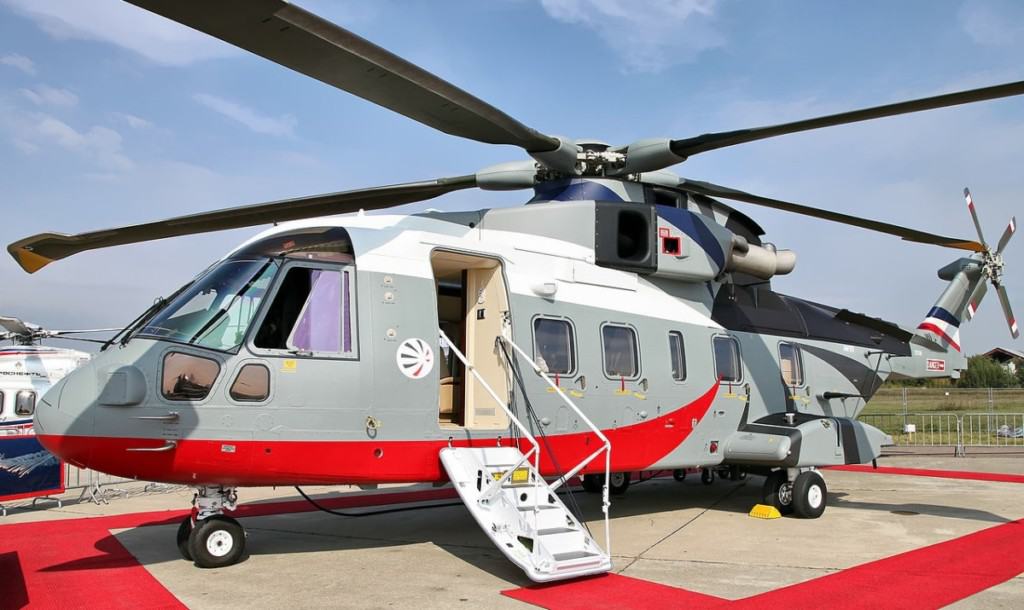
#2 Leonardo AW189
Max Range 1206 km / 651 nm
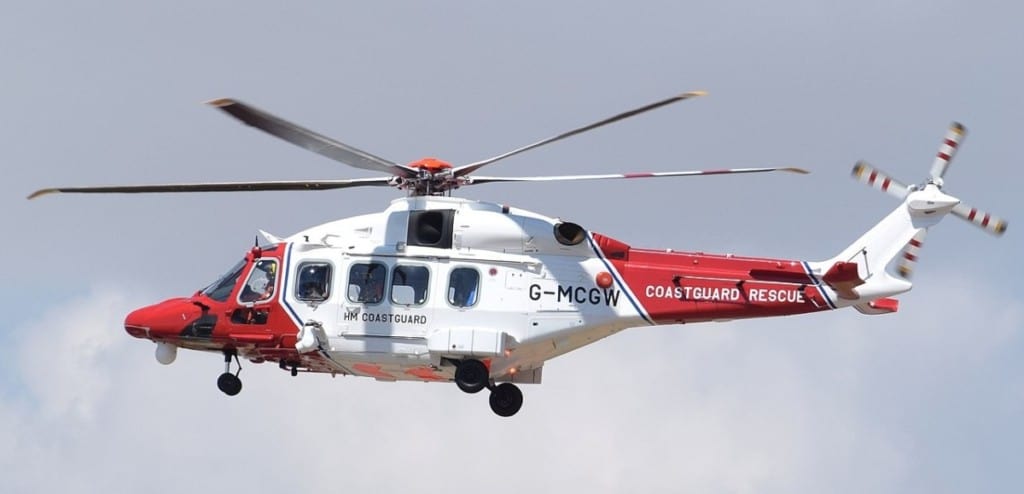
#3 Airbus Helicopter ACH175
Max Range 1135 km/ 613 nm
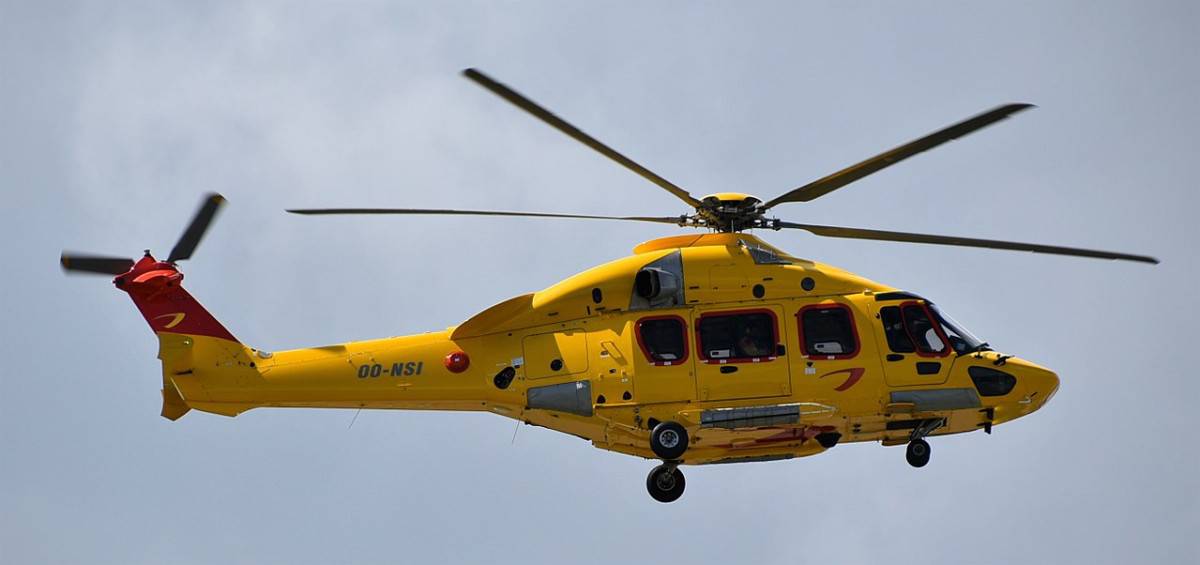
#4 Leonardo AW139
Max Range 1061 km / 573 nm
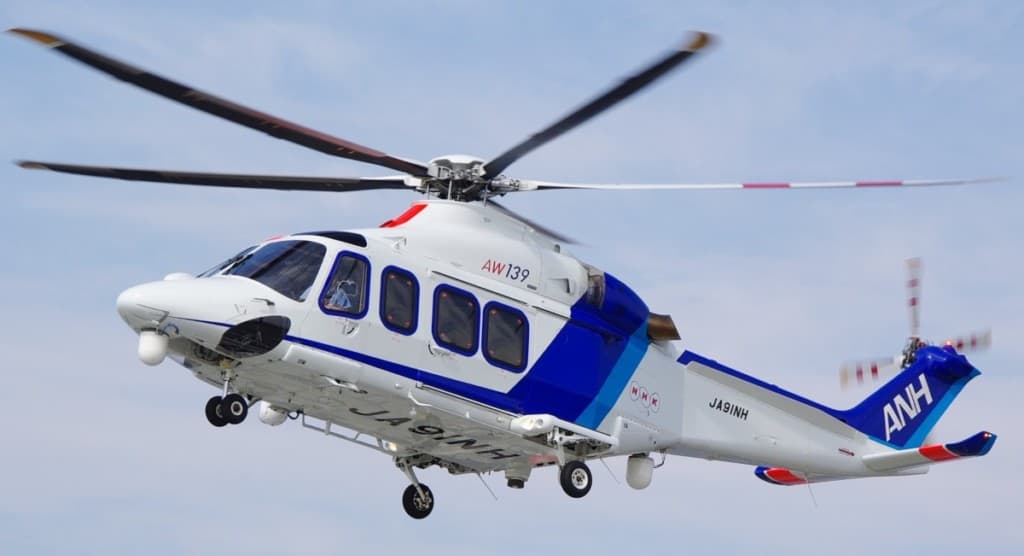
#5 Sikorsky S92
Max Range 1011 km / 546 nm
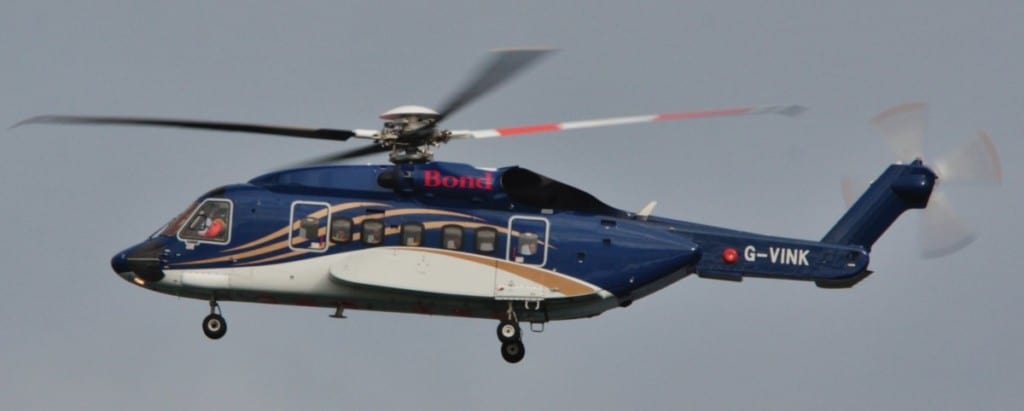
Range Data Sources:
Leonardo | Airbus | Lockheed Martin
Learn More…
Try These Articles:
* How Much Can a Helicopter Lift? 20 Helicopters Compared!
* How High Can You Go In a Helicopter? Can You Land On Mount Everest?
What Factors Affect Helicopter Range?
Range is the term used in aviation to determine the maximum distance an aircraft can fly for the fuel it has on board.
To achieve the maximum range possible a helicopter must have a low fuel burn rate, have a large fuel tank, be as light as possible, have minimal equipment to produce drag, have the wind blowing from behind, and fly at a high speed.
Aviation is all about saving weight & saving costs but providing the best product for the customer. Being able to fly as far as possible and as fast as possible is right at the top of that ‘Want’ list. But you can only get so far.
Here are some of the things that affect how far a helicopter can fly:
Fuel Burn Rate
Fuel efficiency is always at that top of the engine manufacturers’ design list. The less fuel an engine burns for a given power requirement, the longer the fuel will last.
Piston-powered engines are far more fuel-efficient than the gas turbines, but the power they produce for the size and weight of the engine is nowhere near the gas turbines. This is why you only find piston engines in small helicopters.
Eg:
Robinson R44 – 4 Seat Helicopter – 15 Gallons Per Hour Fuel Burn
Bell 206 Jetranger – 5 Seat Helicopter – 25 Gallons Per Hour Fuel Burn

Join My Newsletter & Get Great Tips, Information and Experiences To Help You Become a Superb Pilot!
Fuel Tank Size
Although this may seem obvious, it is not as simple as just slapping in a bigger fuel tank at the design stage.
Helicopters have a maximum gross weight limit for flight.
Larger fuel tanks increase weight – Less weight to be able to take passengers and luggage/cargo.
Larger fuel tanks take up space – Less space for the passengers.
Larger fuel tanks create design challenges to find a place to fit them and they also need to be located in an area to balance the aircraft. Most helicopter fuel tanks sit under/around the main rotor mast to prevent the Center of Gravity from shifting wildly during flight as the fuel burns off.
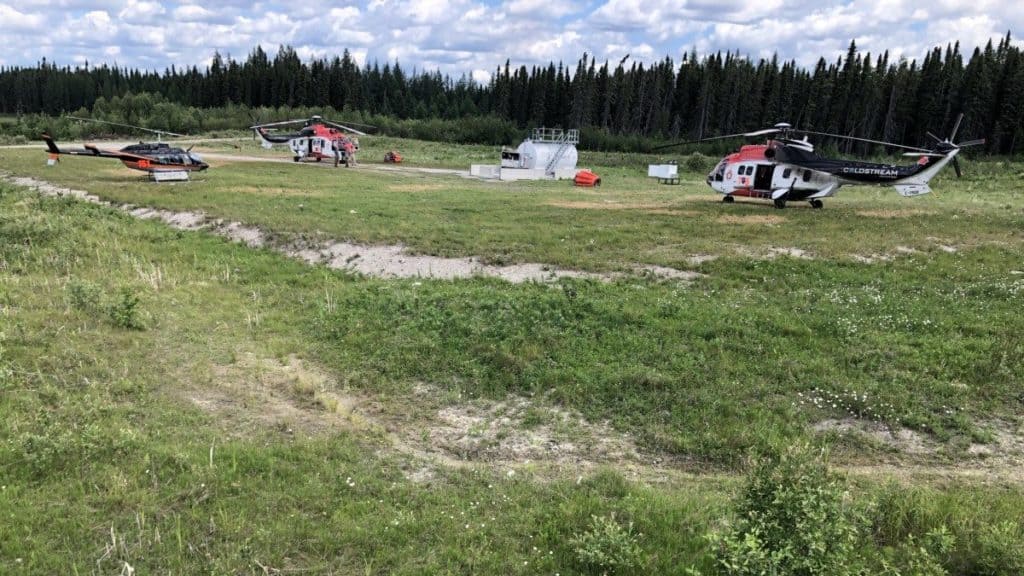
Additional Fuel Tanks
Many of the larger helicopters designed for the Off-Shore and Search & Rescue markets have provisions for additional or auxiliary fuel tanks to be installed in them to greatly improve their range. This is great for the larger machines that have the space, but what about the smaller aircraft?
Generally, the smaller helicopters listed above will be confined to general use with the fuel tank they have, but for long trips, temporary bladder-type fuel tanks can be installed in the passenger compartment.
These are great for delivering helicopters from North America to Europe when you have to cross the Atlantic Ocean via Greenland or similar journeys. Great for range, useless for passengers!
Wind
No matter what range data the manufacturer’s release for their helicopters or what fuel burn rate the engine will do, the wind is one of the biggest factors when it comes to range.
Wind can be a pilot’s friend or a pilot’s nemesis when trying to get somewhere far away.
A wind blowing from behind you (Tailwind) will help push the helicopter in flight – This can dramatically increase how far a helicopter can fly before the fuel runs out.
If flying at 100kts with a 20kt tailwind, the aircraft shadow will theoretically be moving over the ground at 120kts.
A wind blowing towards you (Headwind) will be preventing you from going as fast in flight, thus covering less distance – This can dramatically decrease how far you can fly.
If flying at 100kts with a 20kt headwind, the aircraft shadow will theoretically be moving over the ground at 80kts.
The stronger wind, the more it affects how far the aircraft gets. Pilots can plan to use the wind by looking at the reported wind directions and speeds at different altitudes for the route.
The earth’s surface creates friction as the wind blows over it, this slows down the wind and changes its direction. Winds can be a lot stronger at higher altitudes. By picking a strong tailwind at 5000 feet, this can really help get far, but if the wind is reported to be a headwind the whole way, then a lower altitude may give a weaker wind to fly into.
Weight
I briefly mentioned how every aircraft has a Maximum Gross Weight (MGW) Limit. For each helicopter, this is set by the manufacturer during the aircraft’s design & certification process.
This MGW is the heaviest the helicopter can be at any time and it has to include the helicopter itself, the pilot/s, the passengers, luggage/cargo, and fuel. The only variables are the number of passengers, the amount of stuff they have, or fuel.
Fuel is usually the first variable that is reduced to make sure the total weight remains under the MGW limit for the aircraft. Reducing fuel will also reduce how far it can fly before the Go-Go juice runs out.
It is always a compromise when weight is a factor. The pilot can either take everyone and their stuff, but not fly as far, or leave someone behind and fill the tank full and fly farther!
Speed
The faster a helicopter flies the further it is going to get right? Nope! The faster the helicopter flies, the more fuel it burns so helicopter manufacturers will give set speeds for the pilot to maintain to give the specific outcome the pilot is after.
For Example:
Vne – Fastest Speed Limit. This is just about pure speed, not fuel consumption, or how far it can go. Medevac Helicopters on short trips.
Endurance – This is a speed that will allow the helicopter to stay in the air the longest. Wind, distance, or flying fast is not a deciding factor. News Helicopters covering a developing story.
Range – This is a speed that will allow the aircraft to get as far as possible with the given fuel available. Transiting over the ocean.
A Search & Recuse helicopter is a great example of how these speeds are utilized.
The pilot will fly at the helicopters ‘Best Range Speed’ to fly out to the last known location of a sinking ship. Then once there, the pilot will change to the ‘Best Endurance Speed’ to spend as much time in the air searching the grid for survivors.
Learn More…
Try These Articles:
* How Fast Can a Helicopter Fly? Top 10 Civilian & Military Comparisons
* Helicopters: Can They Fly Across an Ocean?
How Can a Helicopter Increase its’s Range?
Drag is one of the biggest factors to slowing down and reducing how far a helicopter can go. The more drag that is created, the more power is required to maintain a set speed.
More power required = More fuel to be burned = Less fuel to travel further.
Helicopters that have items like winches, searchlights, ski/utility baskets, or wider cargo bays (known as Squirrel Cheeks on the Astar) create drag. One of the machines I fly has a ski/utility basket and squirrel cheeks and I can only get it to fly at 105kts before I reach the maximum power limit.
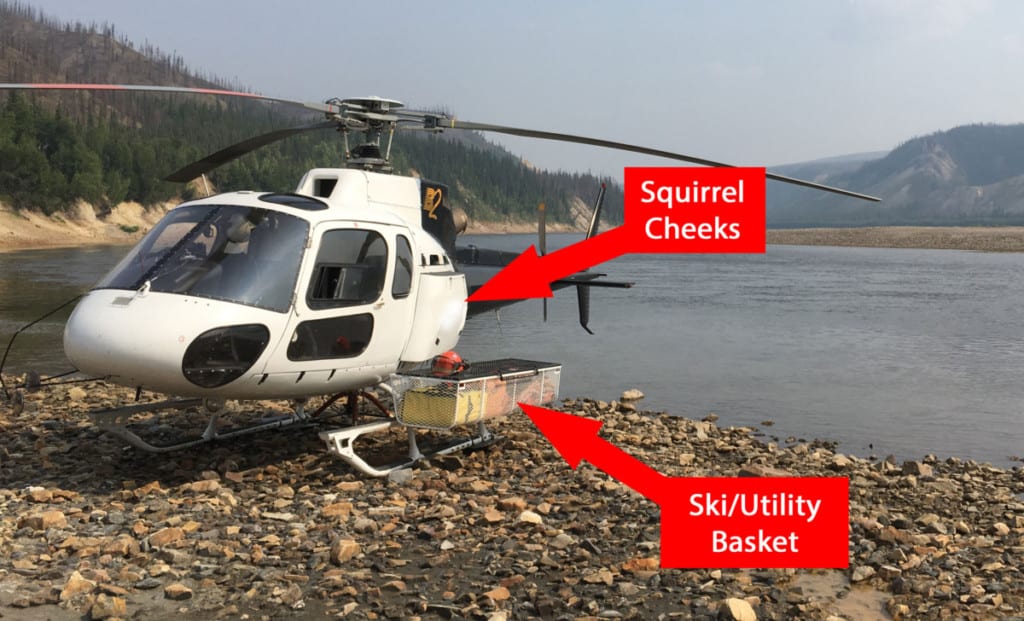
Another Astar without a ski basket and squirrel cheeks has less drag and can fly faster. That machine will fly at 120kts before reaching its maximum power and therefore can fly further before it gets low on fuel.
Helicopter Range Development
Helicopters are entering into a new era where the distance they can go is the next big evolution. Being able to fly as fast and far as a plane, then hover or land when at their destination is the holy grail for helicopter designers.
Commercial Tilt Rotor Helicopters and Hybrid Helicopters are in the design works (Outside of the Military) to push these boundaries. In the next 10-20 years, I think these aircraft are going to be seen more and more and really allow helicopters to travel great distances.
Tilt Rotor Helicopters
Building on the success of the Bell/Boeing V22 Osprey Military Tilt Rotor helicopter the AW609 from Leonardo is well on its way to becoming a commercial version.
From its first ground tests in 2002, this aircraft has gone through an intensive design & testing program that will continue into the early 2020’s. Offshore Oil & Gas, Search & Recuse and VIP Charter are the prime target markets for Leonardo with this design.
When in ‘Plane’ configuration, this machine has a cruise speed of 275kts and a range of 1850km or 1000nm!
For more information on the AW609 visit Leonardo’s website HERE
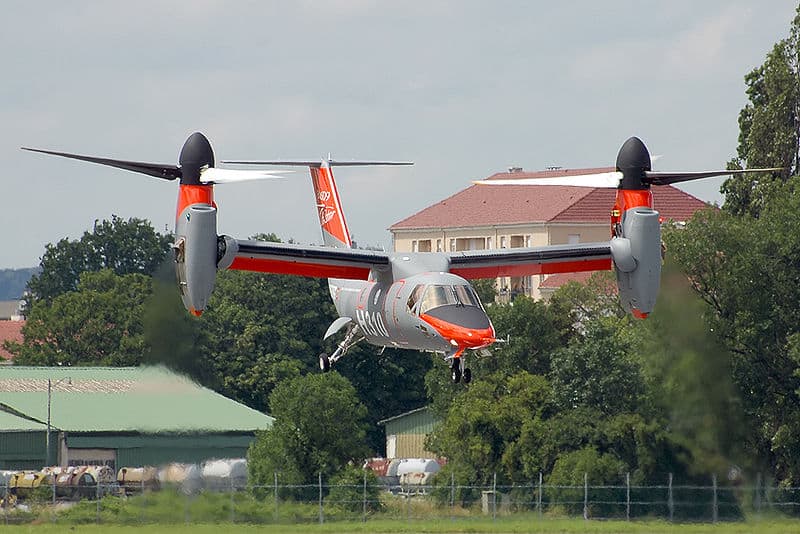
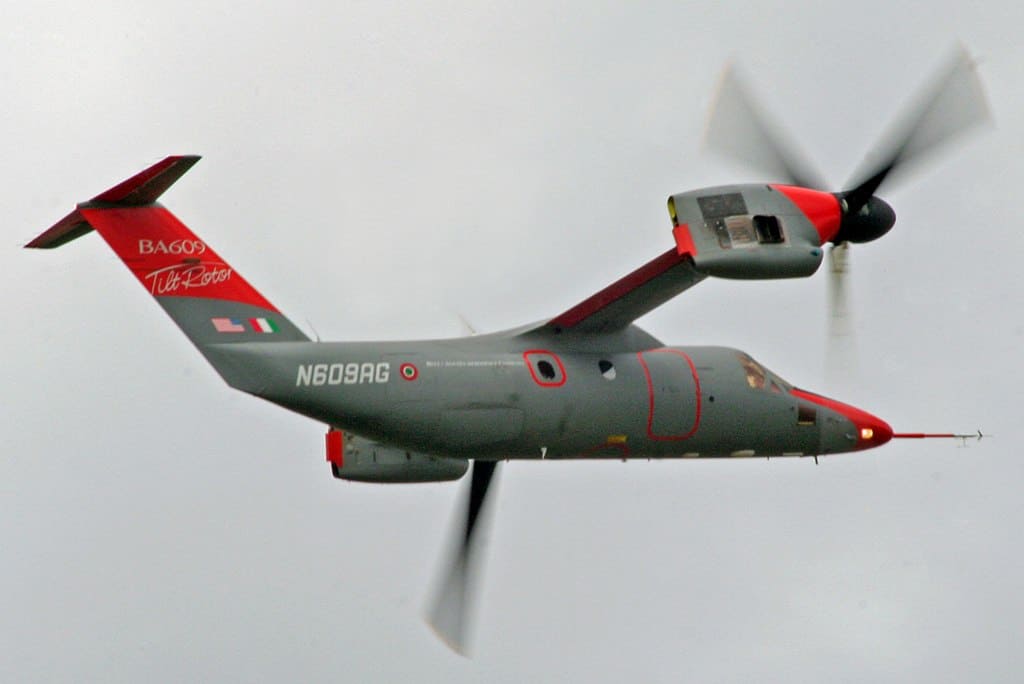
Hybrid Helicopters
The latest development from Airbus, formerly Eurocopter is the X3. This hybrid helicopter uses a combination of a main rotor for lift and pusher props for propulsion.
Based on a modified Eurocopter AS365 Dauphin airframe this machine cruises at 255kts however, Airbus is still keeping tight-lipped about its range, but you can be sure it is going to be vast!
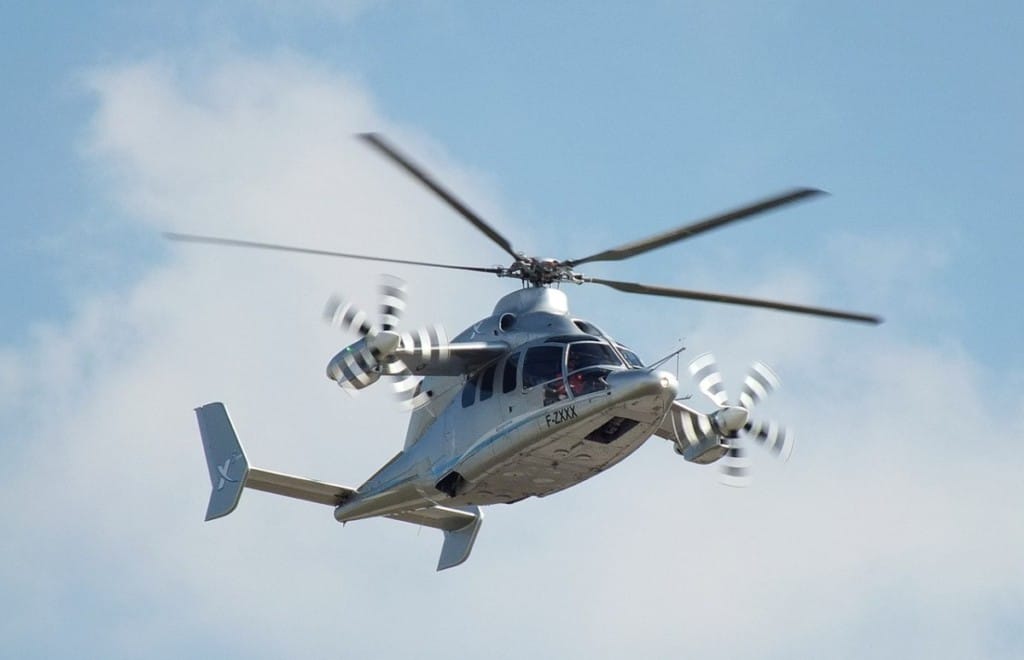
To Finish
For most helicopters available to the general public you can look to be flown a few hundred miles in most of the smaller helicopters. For the larger 2 & 3 engined helicopters, they will be taking you well over 500 miles and if you wait a few more years then the 1000 mile milestone will be in reach!
Helicopters are great for what they are designed to do – get into the places that planes cannot. If you truly want to get somewhere far that has a runway, then a plane is your best option, however, if you need to travel to a classy golf course to close that deal, then the helicopter is your best option.

